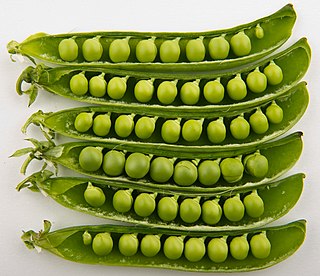
The pea is most commonly the small spherical seed or the seed-pod of the pod fruit Pisum sativum. Each pod contains several peas, which can be green or yellow. Botanically, pea pods are fruit, since they contain seeds and develop from the ovary of a (pea) flower. The name is also used to describe other edible seeds from the Fabaceae such as the pigeon pea, the cowpea, and the seeds from several species of Lathyrus.

Guava is a common tropical fruit cultivated in many tropical and subtropical regions. The common guava Psidium guajava is a small tree in the myrtle family (Myrtaceae), native to Mexico, Central America, the Caribbean and northern South America. The name guava is also given to some other species in the genus Psidium such as strawberry guava and to the pineapple guava, Feijoa sellowiana. In 2019, 55 million tonnes of guavas were produced worldwide, led by India with 45% of the total. Botanically, guavas are berries.

Acorn squash, also called pepper squash or Des Moines squash, is a winter squash with distinctive longitudinal ridges on its exterior and sweet, yellow-orange flesh inside. Although considered a winter squash, acorn squash belongs to the same species as all summer squashes.

The jackfruit, also known as jack tree, is a species of tree in the fig, mulberry, and breadfruit family (Moraceae). Its origin is in the region between the Western Ghats of southern India, all of Bangladesh, Sri Lanka and the rainforests of the Philippines, Indonesia, and Malaysia.
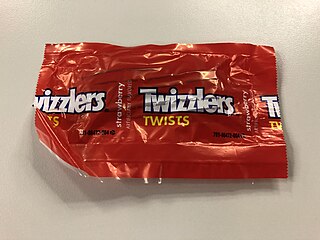
Twizzlers is the product of Y&S Candies, Inc., of Lancaster, Pennsylvania. Twizzlers were first produced in 1929 by Young and Smylie, as the company was then called. The licorice company was founded in 1845, making it one of the oldest confectionery firms in the United States. Twizzlers ingredients consist of corn syrup, wheat flour, sugar, cornstarch, and smaller amounts of palm oil, salt, artificial flavor, glycerin, citric acid, potassium sorbate, Red 40, and soy lecithin. Because only black Twizzlers contain extracts of the licorice plant, they are collectively referred to as licorice-type candy. 70% of the annual production of Twizzlers are strawberry, the most popular Twizzlers flavor.
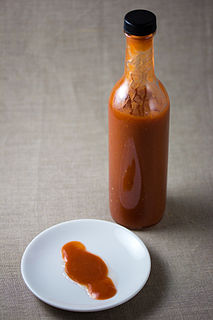
Hot sauce is a type of condiment, seasoning, or salsa made from chili peppers and other ingredients. Many commercial varieties of mass-produced hot sauce exist.

SweeTarts are sweet and sour candies invented under the direction of Menlo F. Smith, CEO of Sunline Inc., in 1962. The candy was created using the same basic recipe as the already popular Pixy Stix and Lik-M-Aid products in order to broaden the market for the tangy taste sensation. In 1963, SweeTarts were introduced with the same flavors as the popular Pixy Stix: cherry, grape, lemon, lime, and orange. Taffy products are also produced with the SweeTarts brand.

The micro ribbon or miniature ribbonconnector is a common type of electrical connector for a variety of applications, such as in computer and telecommunications equipment having many contacts.

Living with the Land is a slow-moving boat ride consisting of a dark ride and greenhouse tour located within The Land, a pavilion at Future World at the Epcot theme park at the Walt Disney World Resort in Bay Lake, Florida. The focus of the ride is on agriculture, especially new technology to make agriculture more efficient, sustainable, and environmentally friendly.
1:144 scale is a scale used for some scale models such as micro/mini armor. 1:144 means that the dimensions of the model are 1/144 (0.00694) the dimensions of the original life-sized object; this equates to a scale of 1/2 inch per 6 feet of original dimension. For instance, an airplane 30 feet (9.14 m) in length would be a mere 2.5 inches (63.5 mm) long as a 1:144 scale model.

Peppadew is a trademarked brand name of South African food company Peppadew International (Pty) Ltd. for a pickled version of the Juanita pepper. Peppadew International produces and markets a variety of food products under the Peppadew brand, including jalapeño peppers, Goldew peppers, pickled onions, hot sauces, pasta sauces and relishes, but is best known for its sweet piquanté pepper grown in the Limpopo province of South Africa.

Weetabix is a breakfast cereal produced by Weetabix Limited in the United Kingdom. It comes in the form of palm-sized wheat biscuits. Variants include organic and Weetabix Crispy Minis (bite-sized) versions. The UK cereal is manufactured in Burton Latimer, Northamptonshire, and exported to over 80 countries. Weetabix for Canada and the United States is manufactured in Cobourg, Ontario, in both organic and conventional versions.
Keurig Dr Pepper Inc., formerly Green Mountain Coffee Roasters (1981–2014) and Keurig Green Mountain (2014–2018), is a publicly-traded American beverage and beverage-maker conglomerate with headquarters in Burlington, Massachusetts. Formed in July 2018 with the merger of Keurig Green Mountain and Dr Pepper Snapple Group, Keurig Dr Pepper offers over 125 hot and cold beverages. The company's Canadian business unit subsidiary operates as Keurig Dr Pepper Canada.
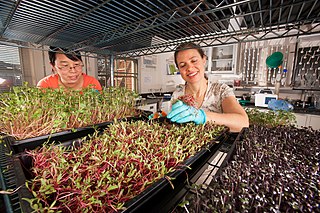
Microgreens are vegetable greens harvested just after the cotyledon leaves have developed with one set of true leaves. They are used as a nutrition supplement, a visual enhancement, and a flavor and texture enhancement. Microgreens are used to add sweetness and spiciness to foods. Microgreens are smaller than “baby greens” because they are harvested very soon after sprouting, rather than after the plant has matured to produce multiple leaves. Among upscale grocers, they are now considered a specialty genre of greens, good for garnishing salads, soups, sandwiches, and plates. They can be used as a main vegetable as well in certain recipes for added flavor and nutrition. Many recipes use them as a garnish while some utilize them as the main ingredient. For example, garlic pea shoots, pea shoots or micro cabbage in cabbage soup, or coleslaw made with radish microgreen instead of cabbage. As microgreens become more popular for their strong flavor and nutrition, chefs and cooks create new ways to use them.

The tomato is the edible berry of the plant Solanum lycopersicum, commonly known as the tomato plant. The species originated in western South America, Mexico, and Central America. The Mexican Nahuatl word tomatl gave rise to the Spanish word tomate, from which the English word tomato derived. Its domestication and use as a cultivated food may have originated with the indigenous peoples of Mexico. The Aztecs used tomatoes in their cooking at the time of the Spanish conquest of the Aztec Empire, and after the Spanish encountered the tomato for the first time after their contact with the Aztecs, they brought the plant to Europe, in a widespread transfer of plants known as the Columbian exchange. From there, the tomato was introduced to other parts of the European-colonized world during the 16th century.
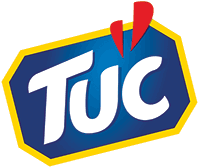
TUC is a brand of salted octagonal golden-yellow crackers, comparable in taste to Ritz crackers. The TUC brand originated in Belgium, and belonged to French company LU.
DNA Plant Technology was an early pioneer in applying transgenic biotechnology to problems in agriculture. The company was founded in Cinnamonson, New Jersey, and moved to California in 1994. Some of the plants and products they developed included vine sweet mini peppers, the Fish tomato and Y1 tobacco. In 1996 the company merged with the Mexican conglomerate Empresas La Moderna, through its Bionovo subsidiary. In 2002, Bionova shut down DNA Plant Technology.

The propagation of grapevines is an important consideration in commercial viticulture and winemaking. Grapevines, most of which belong to the Vitis vinifera family, produce one crop of fruit each growing season with a limited life span for individual vines. While some centenarian old vine examples of grape varieties exist, most grapevines are between the ages of 10 and 30 years. As vineyard owners seek to replant their vines, a number of techniques are available which may include planting a new cutting that has been selected by either clonal or mass (massal) selection. Vines can also be propagated by grafting a new plant vine upon existing rootstock or by layering one of the canes of an existing vine into the ground next to the vine and severing the connection when the new vine develops its own root system.

Honeynut squash is a winter squash cultivar bred from butternut and buttercup squash. It has a similar shape and flavor to butternut squash but averages about half the size and is significantly sweeter. It has dark tan to orange skin and orange fleshy pulp. When ripe, it turns from green to a deep orange and becomes sweeter and richer. It has two to three times more beta-carotene than butternut squash. Although technically a fruit, honeynut squash is used as a vegetable that can be roasted, sautéed, puréed, added to soups, stews, and braises, and is suitably sweet for desserts.















